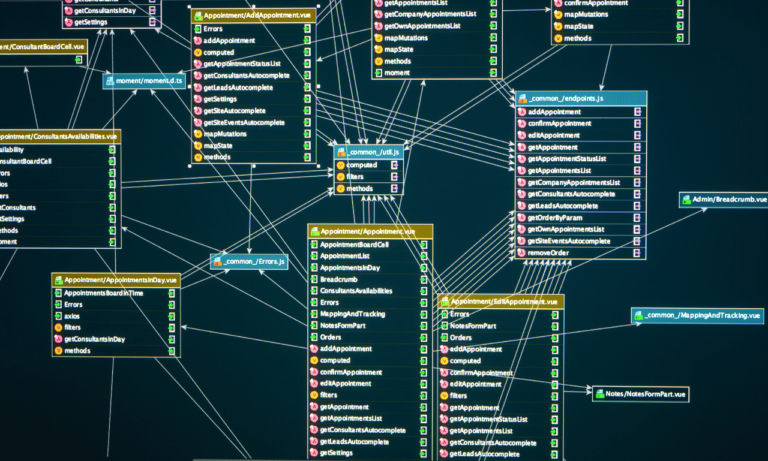Phone:
(+65)8319-0742
In the dynamic intersections of educational psychology and developmental psychology, the concept of Scaffolding Psychology emerges as a cornerstone for effective learning and cognitive development. This educational strategy is not just about providing support, but it’s about crafting a learning experience thatâs perfectly geared to the studentâs evolving capabilities. Through thoughtful instructional design, educators can break down complex information into manageable pieces, offering a guiding hand to learners as they journey from understanding to mastery.
The brilliance of Scaffolding Psychology lies in its flexibility and adaptability, catering to individual learning needs while promoting independence. It’s a scaffolded approach that encourages students to climb to new heights at a pace thatâs challenging yet achievable, striking an essential balance in the educational process.
Key Takeaways
- Grasp the fundamental role of Scaffolding Psychology in promoting cognitive development within the classroom.
- Recognize the importance of structured support and incremental learning steps in effective instructional design.
- Understand Scaffolding Psychology as a practical application of educational psychology principles.
- Appreciate the scaffolding strategy as a means to tailor learning experiences to students’ individual developmental stages.
- Discuss the significance of Scaffolding Psychology in providing the necessary framework for academic growth and student empowerment.
Introduction to Scaffolding Psychology
At the heart of educational pedagogy lies the scaffolding theory, grounded in the pioneering work of Soviet psychologist Lev Vygotsky. Scaffolding psychology encompasses a suite of techniques pivotal for understanding the zone of proximal development (ZPD)âa defining term in Vygotsky scaffolding. This concept identifies the realm of activities that a learner can perform with guidance, extending beyond their capacity for independent action.
Effective scaffolding in education hinges on this dynamic, where educators curate experiences that dwell within the ZPD, thus nurturing the studentâs capability to grasp more complex material. Vygotsky scaffolding is not about making tasks simpler; rather, it’s about making them achievable through strategic support. This support is carefully planned, aimed, and paced, enabling learners to eventually succeed independently.
- An introduction to the zone of proximal development highlights its crucial role in navigating the sweet spot of learning challenges.
- Vygotsky scaffolding brings attention to the importance of instructor’s or peer’s support in the learning journey.
- The essence of scaffolding theory is best understood when dissecting the incremental and tailored assistance given to students.
The application of scaffolding in education surges past mere academic theoryâit’s a practical guidepost for educators to tailor their teaching strategies, ensuring a learner-centric approach. By prioritizing tasks within the ZPD, teaching becomes a transformative process. This process is nuanced, requiring the judicious application of support and the sensitive withdrawal of it as the learner grows, an educational symbiosis inspired by Vygotsky’s profound insights.
Scaffolding theory posits that when learners are provided with the right support at the right time, they can achieve higher levels of understanding and skill acquisition than they would alone. As with physical scaffolding, this metaphorical structure represents the temporary yet essential support from which learners can ascend to newer heights of academic achievement. By positioning tasks within the learner’s ZPD, educators ignite the potential for growth, ingenuity, and academic success.
Key Principles of Scaffolding Theory
Explicating the foundational tenets of Vygotsky scaffolding unveils how essential this concept is within educational psychology. It is indispensable in navigating the intricate process of cognitive development and is intricately related to scaffolding in education. These key principles serve as the struts and braces of the framework that supports learners as they construct knowledge.
Understanding the Zone of Proximal Development
The Zone of Proximal Development (ZPD) is a critical element in fostering cognitive development. It is the sweet spot where learning occurs most effectivelyânot too easy to bore the learner, yet not too difficult to frustrate them. In practice, ZPD is the conceptual space where educational psychology meets instruction, paving the way for tasks that are just within the learner’s reach but require a supportive scaffold to accomplish.
In terms of application, educators assess and identify this developmental zone for each learner. They then tailor the instructional approach to fit within this zone, utilizing Vygotsky scaffolding techniques to elevate the learner’s ability to problem-solve and process information independently over time.
The Role of the More Knowledgeable Other (MKO)
The MKO is a cornerstone within scaffolding theory, symbolizing any individual or tool that offers a higher level of understanding to the learner. In the framework of educational psychology, MKOs can be teachers, peers, or even digital resourcesâall acting as facilitators to scaffold the learnerâs journey. They play a pivotal role in providing the right amount of guidance, adjusting the level of support as the learner’s competence evolves.
The process of fading is integral as it marks the gradual withdrawal of assistance by MKOs, thereby endorsing the budding autonomy in learners. This strategic pull-back aligns with the principles of scaffolding in education, ensuring that learners not only acquire the necessary knowledge but also the confidence to apply it independently.
Scaffolding Strategies for Learning

Exploring effective scaffolding strategies is an integral part of instructional design, vital for enhancing cognitive development and reinforcing the principles of scaffolding theory within the realm of educational psychology. These strategies, when applied judiciously, can greatly enhance the learning experience, offering structured yet flexible support to learners. Through the application of diverse scaffolding tools, educators are able to cater to varied learning needs, promoting a richer and more accessible education process.
Modeling and Demonstrations as Scaffolding Tools
Central to the implementation of scaffolded instruction, modeling and demonstrations stand out as potent tools for conveying complex information in an accessible manner. The power of visual guidance cannot be overstated, with educators presenting new concepts and processes in real-time, therefore reinforcing scaffolding in education. These demonstrations not only show students how to approach a task but also blend in elements of educational psychology by catering to visual learners and those who benefit from concrete examples.
Think Alouds and Structured Discussions
Stimulating cognitive development through conversation, think alouds serve as an auditory guide through complex thought processes. By vocalizing their reasoning, instructors provide a clear example of critical thinking in action, embodying scaffolding theory’s emphasis on transparent and guided learning. Additionally, structured discussions like think-pair-share encourage students to engage actively with the material, promoting communal learning experiences shaped by scaffolding in education.
Graphic Organizers and Visual Aids
Graphic organizers and visual aids are classic embodiments of scaffolding in education that facilitate the organization and comprehension of new concepts. These scaffolding devices are especially important in reinforcing learning for those at crucial stages of cognitive development. Visual tools can make abstract ideas more tangible, providing students with a structure they can gradually internalize and replicate independently as their understanding deepens, true to the core of scaffolding theory.
| Scaffolding Tool | Application in Education | Impact on Cognitive Development |
|---|---|---|
| Modeling | Provides step-by-step demonstrations for skill acquisition. | Enhances observational learning and mirror neuron activation. |
| Think Aloud | Vocalizes problem-solving processes for learners. | Develops metacognitive abilities promoting self-regulated learning. |
| Structured Discussions | Encourages peer interaction and collaborative learning. | Fosters communication skills and collective intelligence. |
| Graphic Organizers | Helps visually structure information and ideas. | Aids in visualizing and connecting concepts, supporting memory retention. |
Implementing Scaffolding in Education

Delving into scaffolding theory reveals it as a crucial technique that elevates instructional design to new heights in the realm of learning. To effectively applying scaffolding in education, practitioners must first gauge the zone of proximal development among learnersâa task requiring meticulous observation and dynamic teaching methods. Only by doing so can educators truly cater to the individual learning styles and cognitive development stages present within a classroom.
At the core of this educational approach lies differentiated instruction, pivotal for providing tailored support. To foster comprehension and facilitate knowledge construction, teachers may adjust tasks based on a learner’s demonstrated skills and needs. Through this adaptive strategy, students can engage with content at a pace and complexity suited just to them. This personalization not only piques interest but enhances absorption of the subject matter, setting a fertile ground for cognitive and academic growth.
Key elements such as the pre-teaching of vocabulary pave the way for smoother learning experiences, arming students with essential language tools to unlock concepts and communicate effectively. Moreover, the integration of interactive and captivating activities stands as an educational beacon, aligning naturally with student interests and prior knowledge.
Here is an illustrative table showcasing strategic approaches within scaffolding in education as part of robust instructional design.
| Strategy | Example | Objective | Outcome |
|---|---|---|---|
| Differentiated Instruction | Group Work with Varied Roles | Match Task Complexity to Learner Ability | Increased Engagement and Personalized Learning |
| Pre-Teaching Vocabulary | Glossaries and Flashcards | Equip Learners with Key Terms | Better Understanding and Confidence |
| Engaging Activities | Problem-Based Learning | Connect Learning with Real-World Interests | Enhanced Motivation and Knowledge Application |
To integrate scaffolding theory into an educational setting most efficiently, instructors must remain vigilant, adjusting the supports provided as students evolve in their capabilities. As learners climb the ladder of understanding, previous strategies may yield diminished returns; hence ongoing reflection and refinement of techniques are paramount for sustained success.
The journey of scaffolding concludes not when all learners reach the same level but when each has maximized their potential within the scaffolded environment. It’s a delicate balance of providing enough support to stimulate growth while crafting the pathway for learners to eventually stand independently in their educational pursuits.
Understanding Scaffolding Psychology

Engaging with Vygotsky scaffolding principles equips both educators and instructional designers with a profound understanding of the role structured support plays in the learning process. This facet of scaffolding psychology is integral for creating educational experiences that are not only impactful but also mindful of diverse learner needs.
The crux of educational psychology is understanding and implementing strategies that facilitate the mental growth of learners in a supportive manner. Delving into Vygotsky’s theories allows for the recognition of essential learning aids, which when strategically applied, can greatly enhance cognitive development.
- Breakdown of complex tasks to enable step-by-step guidance
- Use of questioning to encourage deeper thought processes
- Peer collaboration for shared knowledge construction
- Feedback loops that affirm or correct learner understanding
Beyond theoretical knowledge, practical application of these strategies within the scaffolding framework allows for educational experiences that can be described as both dynamic and resilientâadapting to the evolving cognitive abilities of each learner.
| Scaffolding Tool | Purpose | Application in Educational Psychology |
|---|---|---|
| Modeling | To provide a clear example for imitation | Guiding students through procedures with demonstrations |
| Think-pair-share | For collaborative thinking and peer learning | Facilitating structured discussion and problem-solving |
| Graphic Organizers | To visually organize complex information | Empowering learners to visually map out ideas and relationships |
The implementation of Vygotsky scaffolding not only advances instructional design but also aligns distinctly with the core purposes of educational psychology: to nurture and respect individual learning journeys while simultaneously scaffolding towards collective cognitive advancement.
Navigating Challenges and Assessing Outcomes
When it comes to enhancing the pedagogical methods of instructional design, professionals must give special attention to the approaches of scaffolding psychology. These methodologies are deeply influenced by developmental psychology, which provides the scaffolds necessary for student growth. The process of educational psychology spans various stages of student development, necessitating ongoing assessments and adaptations by educators.
Assessment and Adaptation of Scaffolding Approaches
In the ever-evolving landscape of education, it is imperative for educators to stay attuned to the needs of their students. Assessment forms the backbone of successful scaffolding psychology. Accurate evaluations allow for tailored instructional design that holds up to the diverse academic and developmental needs of students. Regular assessment enables educators to adapt their approach, guaranteeing that the support provided fosters sustainable learning and independence.
Fading and Student Independence
The principle of fading is anchored within the domain of educational psychology. The gradual withdrawal of support, as learners become more capable, echoes the natural progression towards autonomy. This delicate balance, managed by experienced educators, relies on a keen sense of each student’s developmental psychology, thus ensuring the optimal timing for fostering independence.
Fading not only empowers students but also solidifies learning outcomes, with scaffolding psychology being the guiding framework for this educational strategy.
| Developmental Psych | Educational Psych | Instructional Design | Scaffolding Psych |
|---|---|---|---|
| Student’s growth | Learning adaptation | Activity structuring | Support strategies |
| Needs assessment | Outcome evaluation | Engagement techniques | Fading methods |
| Cognitive milestones | Independent learning | Creative question design | Student autonomy |
Conclusion
In the dynamic realm of educational psychology, Scaffolding Psychology stands out as a transformative approach to learning that appreciably nurtures cognitive development. This invaluable framework not only fosters an environment of incremental support but also carefully aligns with the evolving capabilities of students. By leveraging the principles of Scaffolding Psychology, educational professionals empower learners to transcend their immediate knowledge and skillset, propelling them towards greater academic autonomy and efficacy.
The strategies and concepts encompassed within Scaffolding Psychology serve as the backbone for a robust learning journey. They are meticulously crafted to ensure that each learner receives the precise level of support necessary to uncap their latent potential. As practitioners of this approach, educators are equipped to identify when to scaffold and when to fade support, thereby optimizing the window for cognitive growth while bolstering independent learning competencies.
Ultimately, Scaffolding Psychology underscores the significance of structured support in the pursuit of educational milestones. It is an indispensable tool in the arsenal of educational techniques that not only enhances learners’ cognitive development but also showcases the enduring impact of tailored instructional design. As students internalize the skills and confidence derived from this support, they are better prepared to tackle the complexities of their academic and lifelong learning endeavors.
FAQ
What is Scaffolding Psychology?
Scaffolding Psychology is an instructional strategy within developmental and educational psychology that involves offering structured support to learners to enhance cognitive development. It breaks learning into manageable chunks with support provided at each step to help learners understand and become independent.
How does the Zone of Proximal Development relate to Scaffolding Psychology?
The Zone of Proximal Development (ZPD) is a key concept in Scaffolding Psychology that represents the difference between what a learner can do without help and what they can achieve with guidance. This concept guides the scaffolding process by identifying the right level of challenge and support for learners to enhance their capabilities.
Who can be considered a More Knowledgeable Other in scaffolding theory?
A More Knowledgeable Other (MKO) in scaffolding theory refers to an individual who has a higher level of skill or knowledge in a particular area than the learner. This could be a teacher, a more advanced peer, or even educational technology or media resources that provide structure and support.
What are some effective scaffolding strategies used in education?
Effective scaffolding strategies include modeling and demonstration of tasks by teachers or capable peers, employing ‘think aloud’ techniques to show problem-solving in real-time, and using graphic organizers and visual aids to clarify complex concepts for students.
Why is assessment important in the implementation of scaffolding in education?
Assessment is crucial because it helps educators understand the individual and group zones of proximal development. This understanding allows them to design and adjust scaffolding strategies and instructional approaches to meet the varying needs of learners and promote successful cognitive development.
What role does fading play in Scaffolding Psychology?
Fading is the process of gradually reducing the scaffolding support as learners gain proficiency. It’s a strategy that encourages learners to move towards greater independence by allowing them to take more responsibility for their learning as they demonstrate increased competence.
How do instructors navigate challenges when using scaffolding strategies?
Instructors navigate challenges in scaffolding by continuously assessing each student’s progress and the effectiveness of instructional strategies. They then adapt their scaffolding approaches, increasing or decreasing support as needed to accommodate learners’ diverse needs and promote independence.

Top Educational Support Strategies for Teachers
As educators, maximizing academic success hinges on implementing effective educational support strategies…

Understanding What is Scaffolding in Child Development
When it comes to nurturing the minds of the young, What is Scaffolding in Child Development is a question…

Effective Instructional Scaffolding Strategies
Unlocking the full potential of each student is the cornerstone of successful education. With effective…

Understanding Vygotsky Scaffolding in Education
The concept of Vygotsky Scaffolding has become a cornerstone within the realm of educational scaffolding,…

Unlocking Potential with Zone of Proximal Development
In the realm of educational psychology, the Zone of Proximal Development stands as a seminal concept…
No posts found

















